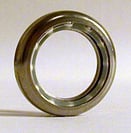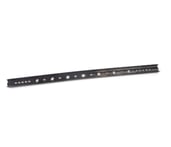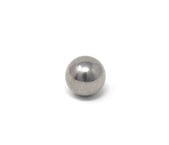Tel: 860-571-3602 | info@hartfordtechnologies.com


Car buyers often gauge vehicle quality by how a movement feels. Smooth motion with just the right degree of resistance signifies high quality while a mechanism with excess play feels loose and poor quality. Automotive manufacturers wanting to build a “quality” reputation should focus attention on that key component of every motion system: the bearing.
You'll find plenty of bearings inside every vehicle. These are either sliding or rolling element designs. Sliding bearings reduce friction with lubrication and specialized materials. These are found around the crankshaft and camshaft. Elsewhere, automotive manufacturers use bearings with balls or rollers that turn to minimize friction and provide a good “feel.”
Most bearings are assembled into circular “races” that allow only circular motion. These are then assembled onto a shaft and installed in a housing. Tight control over manufacturing ensures balls or rollers are exactly the same diameter and surface finish, resulting in smooth, low-friction rotation.
Bearings are also used in linear systems, perhaps most notably, seat tracks. These are expected to provide smooth movement while withstanding high loads. Balls and rollers may be assembled loose into stamped or roll-formed rails or installed into retainer assemblies.
Rolling element bearings are used throughout the modern vehicle. They're in the cabin, under the hood and out at the corners. You'll even find bearing components – the balls themselves – used in the fuel system. Here's a closer look.
 Trunk lids are heavy and usually incorporate a release mechanism and counterbalance so they can be opened easily.Precisely manufactured bearings in the release mechanism enables a smooth and quiet opening motion and help provide a quality “feel” during closing.
Trunk lids are heavy and usually incorporate a release mechanism and counterbalance so they can be opened easily.Precisely manufactured bearings in the release mechanism enables a smooth and quiet opening motion and help provide a quality “feel” during closing.
Good steering feel imparts a sense of vehicle quality, and bearings play a big role. Running from cabin to engine compartment, the column needs support, and that comes from the bearings. These ensure smooth rotation, but only when precisely manufactured and sized for the application.
Minivans might have fallen out of fashion but sliding doors are used on many different vehicles, from those family haulers to a variety of light trucks and vans. Subjected to a wide range of loads and weather conditions, the bearing assemblies must provide accurate opening and closing over thousands of operations.

A linear motion application, bearings ensure smooth, low friction movement of both manually-operated and power seats. A particular challenge for the automotive manufacturers is variation in the stamped or roll-formed components. This is addressed by matching ball or roller diameter to the individual components used.
 While not strictly a bearing application, check valves rely on precisely machined stainless steel balls for safe, dependable operation. In normal service the ball is kept out of the fuel flow, but should the vehicle roll over, it covers an orifice to shut off the fuel and prevent deadly spills.
While not strictly a bearing application, check valves rely on precisely machined stainless steel balls for safe, dependable operation. In normal service the ball is kept out of the fuel flow, but should the vehicle roll over, it covers an orifice to shut off the fuel and prevent deadly spills.
Vehicles rely on bearings for smooth, low-friction motion, but bearings are more than precision mechanical devices. By imparting the right “feel,” a well-chosen bearing gives a driver or car owner the sense that they're in a high-quality vehicle. Go cheap on the bearings and you risk the vehicle feeling cheap.
Hartford Technologies specializes in manufacturing high quality, durable bearings and assemblies for a wide range of applications, contact us to learn more.